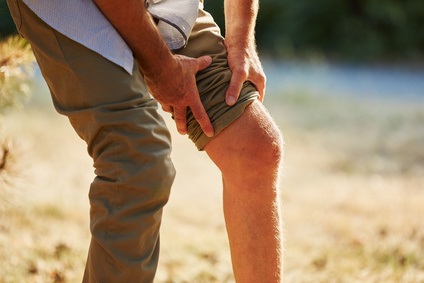As orienteering is a fast-paced adventure sport, there is always a possibility that injuries could occur. If you take part in orienteering, you should take the time to understand what you should do if you or any other party is injured whilst orienteering.
Preventing Injuries
Taking steps to prevent injuries can reduce the likelihood of a serious incident happening during the course of the event. Before participants set off, they should assess the weather conditions and ensure that they are dressed appropriately. Being too hot, too cold or not wearing wet weather footwear can increase the risk of injury.
Inexperienced participants should make themselves known to the organisers and the organisers should take the time to explain orienteering and the associated safety features.
The map and any hazards must be explained to new participants, so that they are aware of any potential risks around the course. Any potential hazards should be clearly marked on the map and checkpoints should be placed a safe distance from these hazards.
Preparing for Injuries
Because the risk of injuries exists, participants should make sure that they have the right equipment to deal with basic injury scenarios. Although most orienteering participants seek to reduce excess weight to as little as possible when they are out on the course, you should carry basic first aid items with you.
Many clubs recommend a basic elastic bandage and a few plasters. These can easily be carried in your pockets. Being able to treat minor injuries at the scene can help to lessen the impact of the injury in the long run. You should also carry a whistle with you when you are out on the course, so that you will be able to use the whistle to attract attention in any circumstance where you are unable to move from the scene of the injury.
What to do if You’re Injured
If you hurt yourself whilst orienteering you should stop for a moment to assess the potential impact of the injury. If the injury is very minor, like a cut or a graze, you may be able to continue on around the course.
If you have any bandages with you, try to cover up the wound to prevent any dirt from entering the cut. You must take the plaster off and clean the wound as soon as you get back to the finish.
If you feel as though you have twisted or sprained any of your joints you should stop running immediately. Put on an elastic bandage, if you have one, to help to support the joint. If you are still able to walk, choose the quickest and easiest route back to the finish line or nearest medical station. Trying to continue to run when you have this sort of injury increases the potential for long term damage and will increase the length of recovery time.
Once you are back to safety you should follow the RICER method of Rest, Ice, Compression, Elevation, and Referral to a medical professional. You should not take part in orienteering again until you have fully recovered from the injury. Overuse of damaged soft tissue will only exacerbate the problem.
If you are unable to move after an injury, either because you are physically unable or because you would put yourself in danger if you were to do so, you should blow your whistle 6 times at 10 second intervals. Repeat the whistle process every two minutes until help arrives. If you hear someone else using this whistle pattern to summon help, you must stop running the course and try to find the distressed party. Your assistance may play a crucial part in helping to save an injured person.
Club Responsibility
Although orienteering participants must understand the risks involved with taking part in the sport, orienteering clubs also have a responsibility to keep participants safe from harm.
Each club should have a set of emergency procedures which detail what should be done in an emergency scenario. This will normally include set actions to take if participants do not arrive back at the finish line within a reasonable amount of time. Failing to have an emergency procedure or failing to follow it properly may result in the club being held accountable for any injuries that occur at club events.
Compensation for Injuries at Orienteering Events
Clubs that are registered with British Orienteering should be covered by Public Liability insurance. This should cover any accidental bodily injuries which occur during the course of an event.
In cases of negligence, the club may not be covered for personal injuries in the entirety by insurance and individual members of the club could be considered to be liable. However, in the vast majority of circumstances, injured parties are able to claim compensation from club insurance.

Leave a Reply